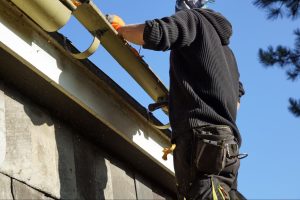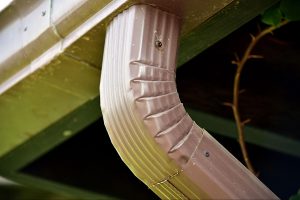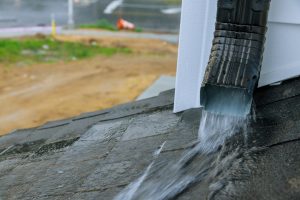Water moves fast and with force, especially during a heavy downpour. It collects near your home without a proper path and chips away at its structure. Cracks form, mold spreads, and landscaping washes out, all because water wasn’t sent where it should go. For homeowners, minor missteps in water management lead to outsized repair bills later. Downspouts are a fundamental part of home drainage, but their effect on property protection is negligible.
How Downspouts Direct Water Away From Your Home
Downspouts work with your gutter system to direct rainwater from the roof to safe drainage zones away from the foundation. This process uses gravity and proper slope to move water quickly, avoiding soil erosion and puddling. When the slope is too shallow, water can pool and stall; it can hit the ground too hard and wash soil away when it is too steep. The placement and number of downspouts also matter, especially on large or complex rooflines. In short, a downspout’s success depends on its pitch, location, and connection to the surrounding landscape.
Gravity and Slope Make it Work
Downspouts rely on gravity, but gravity alone isn’t enough without the correct slope and outlet position. A properly sloped gutter feeds water into the downspout, and the downspout’s vertical drop must guide it far enough away to prevent soil saturation. If the yard doesn’t slope away from the house, downspouts should connect to extensions or underground piping. It ensures that runoff doesn’t simply drain near the foundation, where it can harm it over time. Maintaining a smooth, unrestricted water path from the roof to the outlet keeps drainage consistent and safe.
Placement Matters More Than You Think
Downspout exits can protect or damage your home depending on how close it is to the structure’s base. If it ends near the foundation, water will seep into the soil, causing pressure buildup that can crack walls and floors. Clever placement sends runoff toward storm drains, drainage beds, or lower-elevation zones. Multiple downspouts spaced evenly prevent overflow and overload for larger homes or those with roof valleys. Correct positioning is not just about effectiveness; it also limits erosion, waterlogging, and long-term structural risks.
The Hidden Costs of Missing or Faulty Downspouts
Many homeowners underestimate the damage water can cause when it’s not managed correctly, to the point where it leaves the gutter. A missing or broken downspout lets water run freely down the side of the house, saturating walls, windows, and soil. Over weeks and months, that moisture builds up behind siding and inside basements, creating perfect conditions for mold and decay. The damage from such a small fixture’s absence can cost thousands in repairs, mainly when it affects structural elements. If your downspouts are cracked, clogged, or pointed in the wrong direction, the cost of doing nothing increases daily.
Water Damage Doesn’t Wait
Rainwater that isn’t guided away from your home takes the path of least resistance. It often happens in crawl spaces, basements, and wall cavities. Even a small stream of water can soak insulation, warp wood, and stain drywall if left unchecked. Moisture inside a wall or under flooring is hard to detect and expensive to fix later. Mold thrives in these damp areas, and once it spreads, it can affect indoor air quality and health. The damage caused by a single rainy season can take weeks and thousands of dollars to reverse if downspouts aren’t doing their job.
Foundation Repair is Never Cheap
When water consistently pools around your foundation, it seeps downward and increases pressure against the concrete walls. That causes cracking and eventual structural shifting. Once the foundation moves, other problems follow: uneven floors, stuck doors, and visible wall gaps. Repairs often involve excavation, hydraulic lifting, and waterproofing barriers, which can cost several thousand dollars depending on the depth of damage. Even if cracks start small, they rarely stay that way without intervention. Proper downspout drainage prevents the persistent saturation that leads to foundation instability and heavy repair bills.
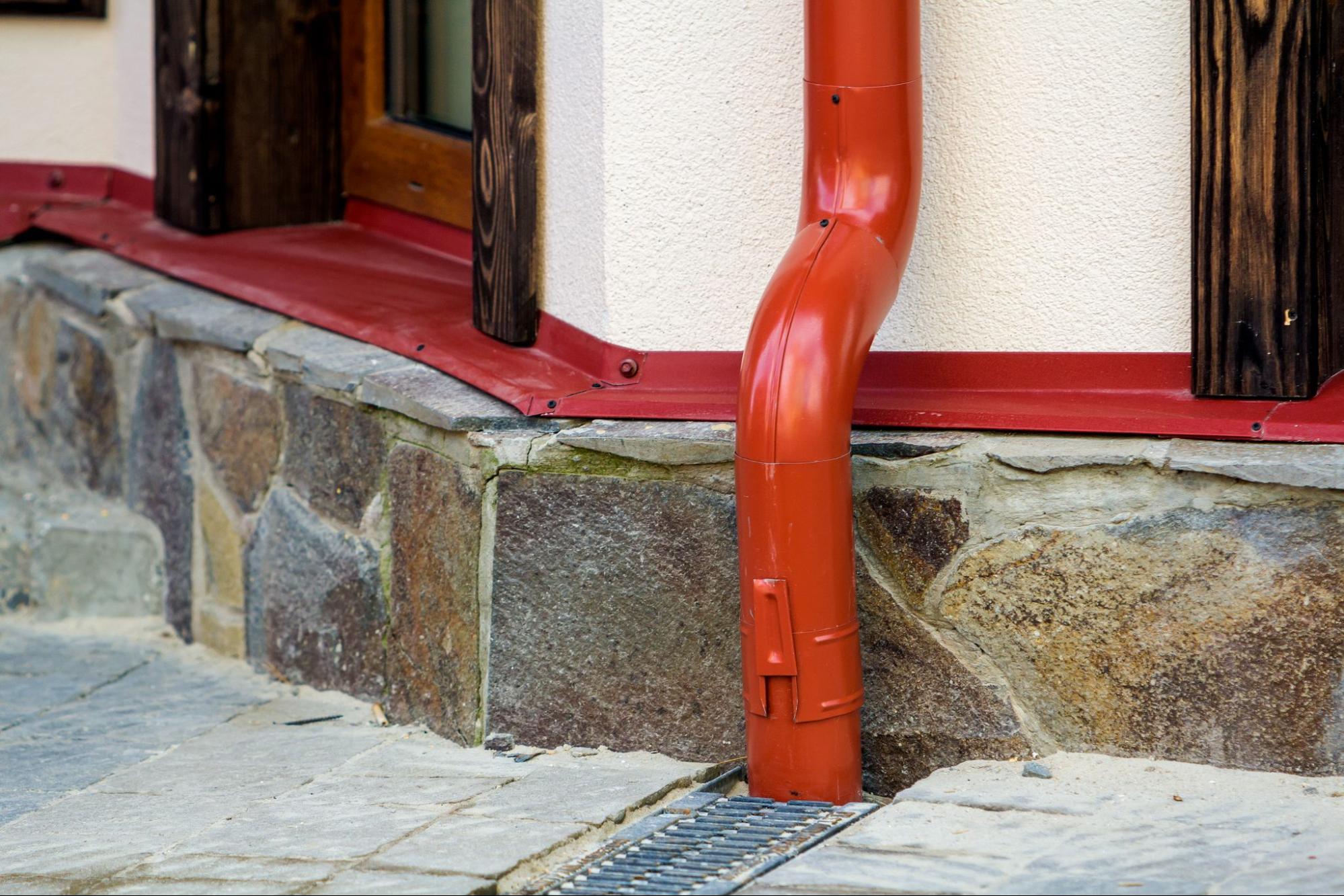
Downspouts Help Prevent Landscape Destruction
Downspouts don’t just protect the house; they also protect the yard and everything built on it. When water rushes out in one spot repeatedly, it tears through mulch beds, washes out topsoil, and drowns plants. Grass can’t recover if the roots suffocate under pooled water, and erosion slowly reshapes your yard without you noticing. Over time, sidewalks crack, patios tilt, and beautiful landscaping turns into mud pits. A well-directed downspout preserves the look and function of your yard by distributing water safely and evenly.
Soil Washout is a Silent Killer
Every time it rains, unprotected soil takes a hit from the force of falling water. If downspouts aren’t extended far enough or aren’t draining into suitable zones, they accelerate erosion and reduce soil density. Plants in those areas begin to struggle, and bare dirt patches appear where turf used to thrive. Water also compacts the soil, making it harder for air to reach the roots, leading to plant death over time. Preventing this kind of soil destruction starts with guiding runoff gently and consistently to low-impact areas.
Protecting Hardscapes and Driveways
Downspouts that empty onto driveways or near patios cause more than surface pooling; they can compromise the structure beneath. Waterworks between paver joints or under concrete slabs freeze and expand in cold weather, leading to hardscape cracking, sinking, and sometimes total failure. Over time, a minor gap becomes a trip hazard or a flooded surface that damages tires and tools. Redirecting runoff with precision preserves the safety and value of paved areas around your home.
Modern Downspout Options and Add-Ons
Today’s downspouts offer more than the plain aluminum pipes of the past. Homeowners can now access add-ons and configurations that fit their property’s layout, soil conditions, and even eco-friendly goals. From flexible extensions to rainwater harvesting setups, these upgrades improve performance and sustainability. Custom setups can also be tailored to prevent runoff from hitting walkways or neighbor properties. Whether your goal is practicality, aesthetics, or conservation, modern downspout solutions offer the flexibility to meet it.
Flexible Extensions and Underground Drains
Extensions help carry water farther from the house when the natural slope isn’t enough. Flexible versions bend around landscaping, making them great for tight spaces or garden borders. Underground drainage systems go further by burying pipes connecting to pop-up emitters, gravel pits, or storm drains. These systems are low-profile and highly efficient, especially on properties that experience heavy rainfall. Together, extensions and underground options offer customizable control over where runoff travels.
Rain Barrels and Eco-Friendly Systems
Many homeowners use downspouts to collect rainwater in barrels for garden irrigation or household use. These systems reduce water bills and help manage stormwater during peak rain seasons. Some municipalities even offer tax credits or rebates for rain catchment systems because they ease pressure on city stormwater networks. Rain barrels can be fitted with overflow valves, screens to block debris, and hose spigots for easy access. When installed correctly, they are a drainage aid and a resource-saving tool.
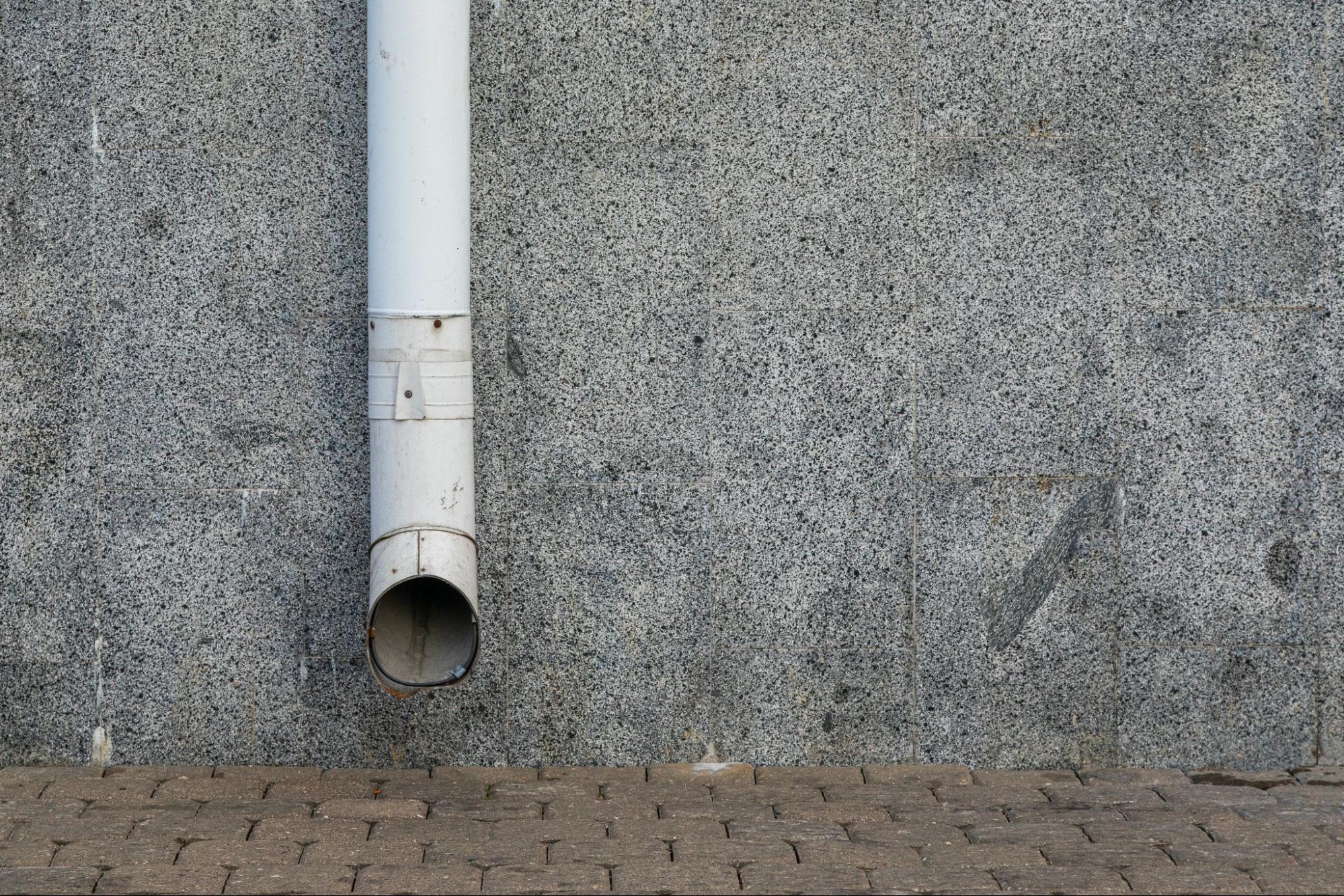
Why Regular Downspout Maintenance Can’t Be Ignored
Even the most advanced downspout system becomes useless if clogged, disconnected, or damaged. Over time, dirt, leaves, and ice can block the water flow and send it pouring over the gutter edge. Joints wear down, screws rust, and brackets loosen, especially after harsh weather. Seasonal checks and minor repairs go a long way in preserving the full function of your drainage system. Like any part of your home, downspouts need attention to keep working correctly.
Cleaning and Clearing Debris
Leaves, bird nests, and roofing granules often accumulate in gutters and slide down into the downspout, forming tight blockages. When that happens, water backs up and overflows, running down the siding or pooling near the base of the home. Regular cleanings in spring and fall remove this buildup before it causes trouble. Gutter guards help, but aren’t a complete solution; they still require inspections to catch hidden clogs. Use a garden hose or plumber’s snake to test the flow and remove stubborn debris.
Watch for Rust, Leaks, and Joint Separation
Metal downspouts are tough but not invincible; moisture can cause rust, and seams can split over time. Small leaks might appear as water stains on the wall or puddles where none should be. Often, these problems start small and spread, especially during freeze-thaw cycles or high winds. Look for discoloration, shifting brackets, or gaps between sections, which signal weakening. Replace worn parts promptly to prevent the need for a complete system replacement later.
Professional Downspout Installation vs. DIY Work
Installing a downspout might look simple, but mistakes are common without experience or proper tools. Misjudging the angle, height, or outlet location can lead to water pooling, backup, or damage to the siding. DIY setups often lack the structural support to handle high volumes of water during heavy storms. A professional gutter contractor brings knowledge of local soil types, roof design, and water flow, which ensures the system works smoothly from top to bottom. While it may cost more upfront, it prevents repeat work and long-term water issues.
Downspouts Are the Silent Heroes of Storm Season
During heavy rain, every square foot of roof sheds water that must go somewhere fast. One average-sized roof can dump hundreds of gallons in an hour, and without downspouts, that runoff becomes a threat. Downspouts catch that stormwater and send it to places that can handle it—lawns, drains, or collection tanks. They keep rain from seeping into walls, flooding basements, or ruining landscaping. When storms hit hard and fast, these fixtures do the unseen work of protecting your home.
Managing Roof Runoff in Heavy Rain
During intense rainstorms, the roof gathers water quickly, and gutters fill in minutes. Downspouts provide a safe escape route for that water, keeping it from overflowing and damaging your home’s structure. Without them, water pours directly onto flower beds, walkways, or worse, into your basement. Their speed and efficiency during storms determine whether your property stays dry or suffers costly damage. As storms become more unpredictable, a solid drainage system becomes more critical.
Reinforce Your Home’s Defense With Smarter Downspouts
A solid downspout system isn’t just a smart upgrade; it’s your home’s silent defender against slow, expensive damage. When your drainage works right, you don’t see the problems it prevents. Instead, you enjoy the peace of mind it brings. Take a closer look at where your water’s going and decide if it’s helping or hurting. A minor fix today could spare you from a much larger mess tomorrow.
Learn what your gutters and downspouts aren’t telling you. Head to the Quality Rain Gutters Inc. blog for practical tips and proven strategies.


